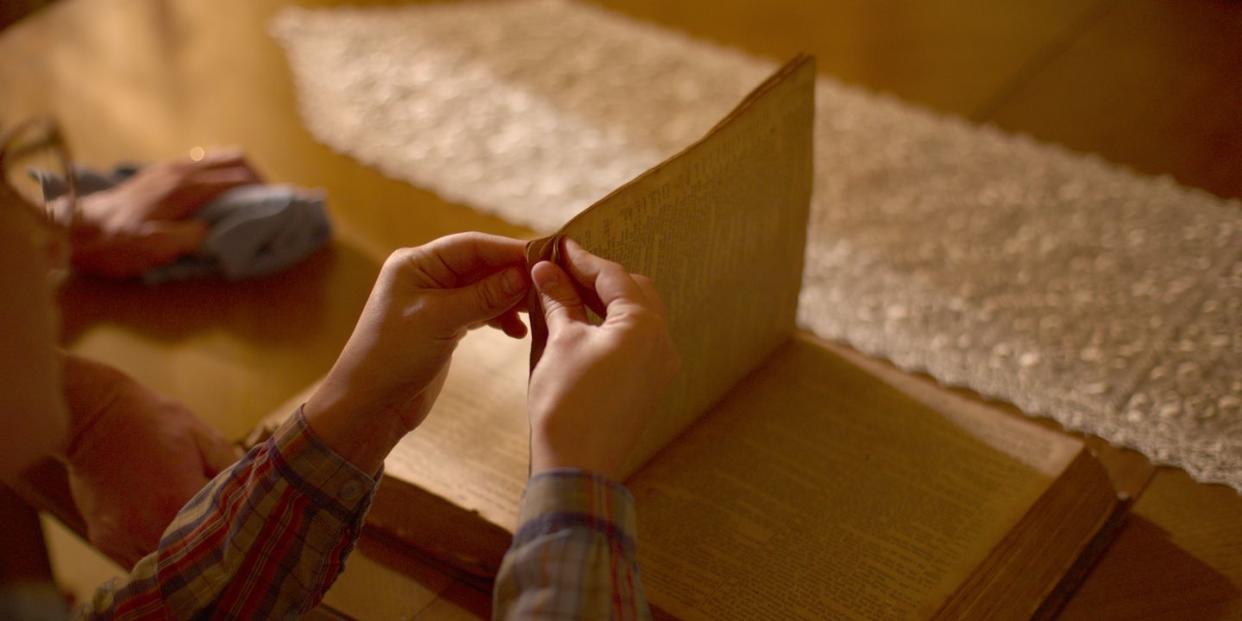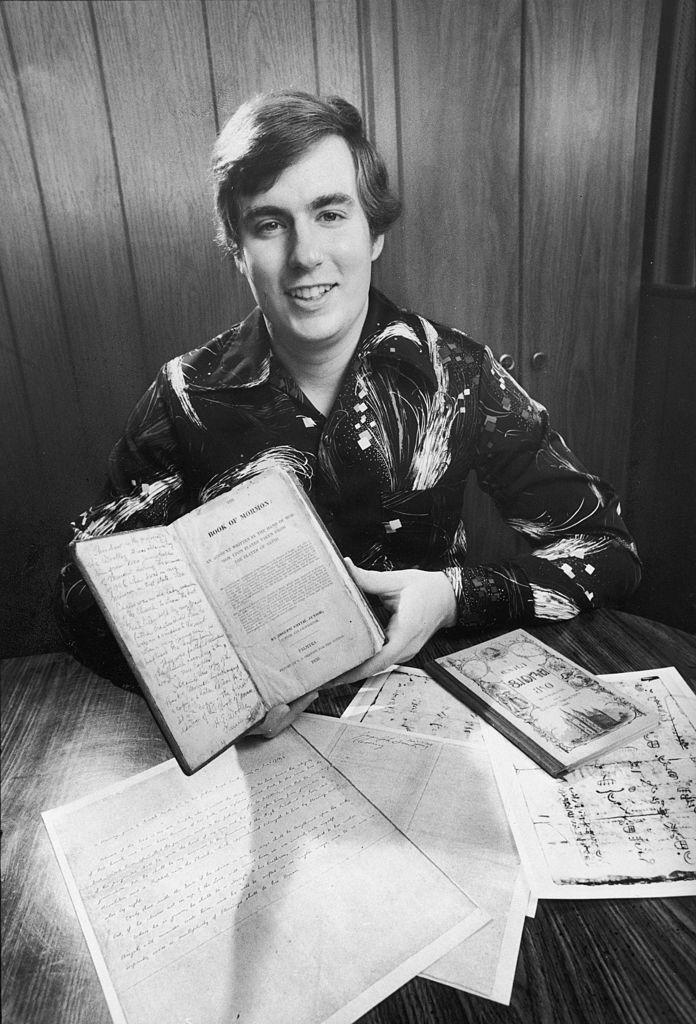The Twisted True Story of the Salamander Letter in ‘Murder Among the Mormons’

Welcome, amateur sleuths, to a deep dive into one of the most important components of Netflix’s new docuseries Murder Among the Mormons. We’re talking about the Salamander Letter, and even though it falls into the category of “solved mysteries,” there are enough twists involved that it will be living rent-free in our minds for a long time.
As you may already know from the series, the Salamander Letter involves the origins of the Mormon (aka Latter-Day Saints or LDS) Church. Despite the church’s natural interest in the document, this story is less about religion and more about (say it with me, true-crime fans): a violent man with delusions of grandeur trying to prove a point. More on that later, but first, to understand this infamous letter, we need to go back (back to the beginning) of the LDS Church.
How did the LDS Church start?
Mormonism was founded in 1830 by Joseph Smith Jr. He claimed to have been visited by an angel named Moroni, who told him he had been chosen to translate the Book of Mormon. Moroni explained that the book was inscribed on golden plates in New York State and instructed Smith on how to find them. The rest is Mormon history, and for a long time, the LDS community observed this account without complications. Cue the Salamander Letter, which complicated things as soon as it came on the scene.
So…what’s the Salamander Letter?
The Salamander Letter came into play in the early 1980s while a man named Mark Hofmann was making a name for himself as a reputable antiques dealer in Utah. He specialized in finding and selling historic documents and also happened to be a devout Mormon. As he was earning cred in his community for procuring early Mormon texts, he announced the discovery of a never-before-seen letter. The letter was dated in 1830 and signed by Martin Harris, the BFF of LDS founder Joseph Smith. In the letter, Harris describes the origin story of the LDS Church with some high-key differences, like the presence of a white salamander.
What exactly is in the Salamander Letter?
In the letter, Harris explains that when Smith found the golden plates, they were guarded by a white salamander that transformed itself into a spirit. It also requested that Smith’s deceased brother be present in order for him to access the plates. This was obviously very different from the OG story, which had zero mention of this pushy amphibian that we can only assume bears some resemblance to the star of the Geico commercials.
The letter, and the salamander of it all, caused a serious rift in the Mormon community. Even though it may seem like a relatively minor discrepancy, considering it involves the founding of an entire religion, it understandably created a lot of confusion. Some Mormons considered this concerning, to say the least. If that detail was off in the original account, what else could be wrong with the story?
Spoiler alert: There’s a twist?
All of this had the effect of muddying up the Mormon origin story for a hot second, until it was eventually revealed that the Salamander Letter was a forgery. This brings us back to Hofmann, the supposed devout Mormon, who by “discovering” the document actually meant to say that he had secretly made it himself and passed it off as real.

As it turns out, the red flags were about Hofmann all along. Not only was he actually an atheist actively seeking to undermine the church due to his own dissatisfaction with it, but he also had a long history of counterfeiting all kinds of materials. The Deseret News reports that he had been altering coins since the age of 12, and by 14 years old, he had developed a forgery technique that he believed to be undetectable. Throughout his career, he would go on to stealthily fabricate documents “written by” everyone from the likes of Emily Dickinson to George Washington, profiting hundreds of thousands of dollars before he got caught.
What happened after?
Unfortunately, Hofmann was able to wreak some serious havoc before he ultimately was discovered and convicted. He was so desperate to cover his tracks and keep his deceptions alive that he was willing to kill, which resulted in the deaths of two people in the 1985 Utah Bombings. For more on that, we direct you to Netflix’s (highly addictive) documentary series, which delves deep into the controversy and its morbid fallout.
You love all the deets on true crime. So do we! Let’s overanalyze them together.
You Might Also Like

